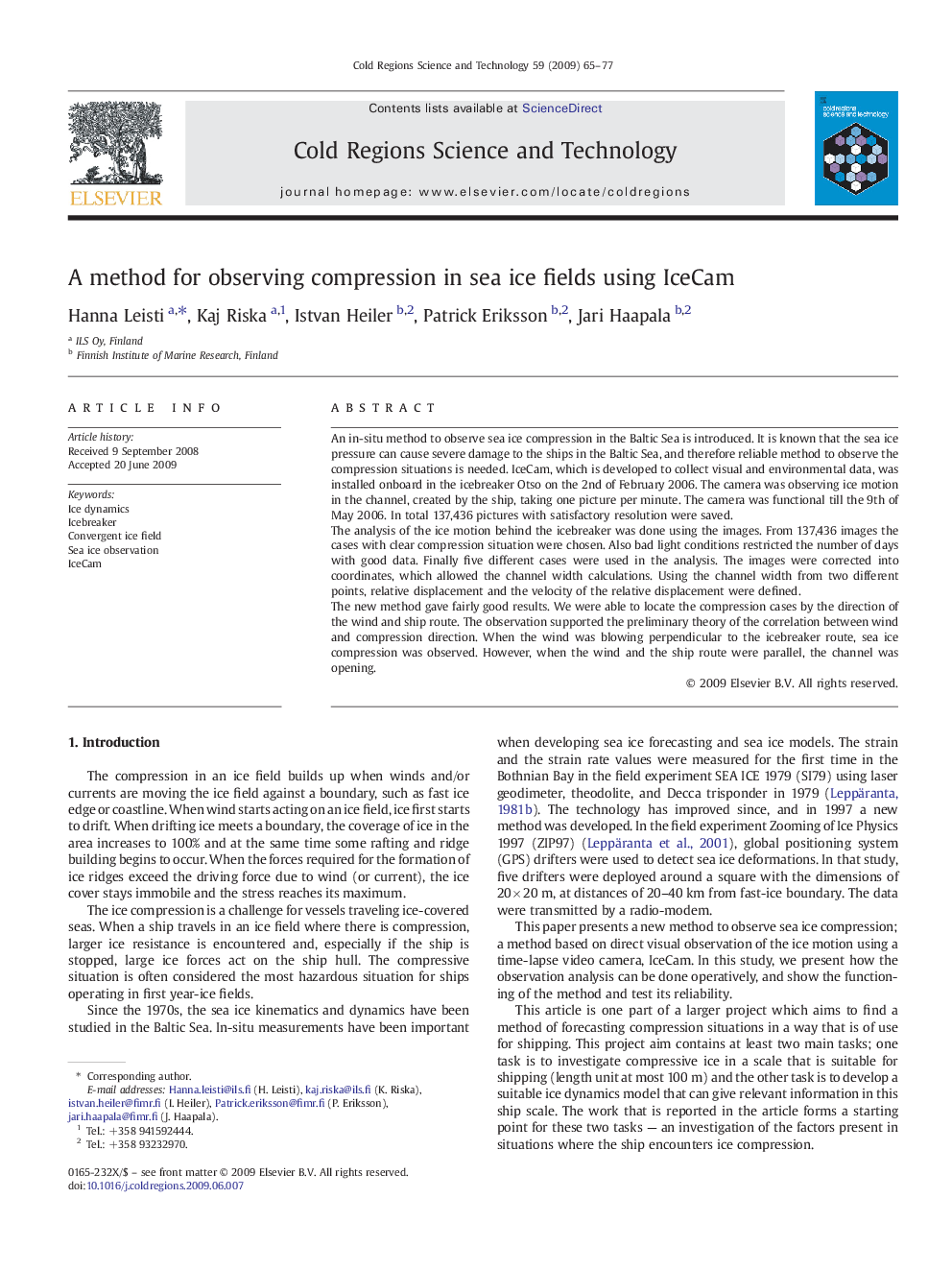| Article ID | Journal | Published Year | Pages | File Type |
|---|---|---|---|---|
| 4676442 | Cold Regions Science and Technology | 2009 | 13 Pages |
An in-situ method to observe sea ice compression in the Baltic Sea is introduced. It is known that the sea ice pressure can cause severe damage to the ships in the Baltic Sea, and therefore reliable method to observe the compression situations is needed. IceCam, which is developed to collect visual and environmental data, was installed onboard in the icebreaker Otso on the 2nd of February 2006. The camera was observing ice motion in the channel, created by the ship, taking one picture per minute. The camera was functional till the 9th of May 2006. In total 137,436 pictures with satisfactory resolution were saved.The analysis of the ice motion behind the icebreaker was done using the images. From 137,436 images the cases with clear compression situation were chosen. Also bad light conditions restricted the number of days with good data. Finally five different cases were used in the analysis. The images were corrected into coordinates, which allowed the channel width calculations. Using the channel width from two different points, relative displacement and the velocity of the relative displacement were defined.The new method gave fairly good results. We were able to locate the compression cases by the direction of the wind and ship route. The observation supported the preliminary theory of the correlation between wind and compression direction. When the wind was blowing perpendicular to the icebreaker route, sea ice compression was observed. However, when the wind and the ship route were parallel, the channel was opening.
